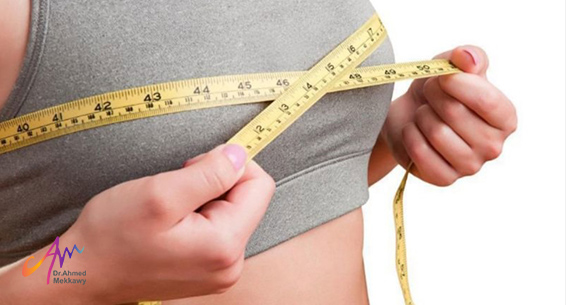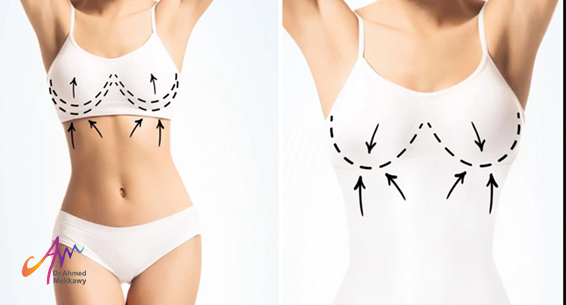Breast Reduction Surgery

Breast Reduction Surgery
Breast reduction, also known as mammoplasty, is a procedure to remove excess fat, glandular tissue, and sagging skin to achieve a more proportionate breast size with your body and alleviate the discomfort associated with large breasts. In this article, let's explore the characteristics of breast reduction surgery and its advantages.
Breast Reduction:
Having disproportionately large breasts can cause physical and emotional discomfort for patients. Some individuals may experience discomfort due to the size and weight of their breasts. The resulting pain can make it difficult for some to engage in common physical activities such as exercising or running, in addition to the diseases that some women may be exposed to. Although breast reduction surgery is often performed to address medical issues, patients who do not experience negative effects from the size of their breasts but are dissatisfied with their breast size can undergo breast reduction as a cosmetic procedure. The reason for this may be a sense of discomfort and dissatisfaction with breast size and a desire to have a more proportionate body or to facilitate finding suitable clothing sizes and bras.
Other breast cosmetic procedures performed by Dr. Ahmed Mekkawy include:
• Breast augmentation with fat injection or silicone or saline implants
• Breast lift and tightening to address sagging.
• Breast reconstruction and repair after an accident or breast removal due to breast cancer.
Candidates for Breast Reduction:
Excessively large breasts can cause health and emotional problems. In addition to self-image issues, you may also experience physical pain and discomfort due to the weight of glandular tissues and excess skin, which puts a significant weight on your back and neck, limiting your mobility. You may be a candidate for breast reduction if:
• You are in good health.
• You have realistic expectations regarding the results of the procedure.
• You do not smoke or can quit smoking for some time.
• You feel discomfort from the size of your breasts.
• Your breast size restricts your ability to engage in certain physical activities.
• You experience pain in your back, neck, and shoulders due to the weight of your breasts.
• You experience pain and have signs or marks of redness on the skin while wearing bras.
• You have irritation and inflammation of the skin in the creases and underneath the breasts.
Doctor's Visit and Consultation:
During your consultation with Dr. Ahmed Mekkawy, a consultant in plastic surgery and body sculpture, be prepared to discuss:
• Why you desire this surgery and the results you expect to achieve.
• Your overall health and the types of allergies you suffer from.
• Your use of medications, vitamins, herbs, dietary supplements, alcohol, tobacco, and drugs.
• Previous surgeries you have undergone.
• Your family history, including any history of cancer or chronic diseases.
• Previous breast imaging results.
The doctor will also:
• Evaluate your general health and any previous health conditions or risk factors you may have.
• Examine your breasts and take detailed measurements of their size, shape, skin quality, and nipple position.
• Discuss your options and create a detailed treatment plan for you.
• Discuss the potential outcomes of the reduction surgery and any potential risks or complications.
• Discuss the type of anesthesia used during the breast reduction procedure.
What are the risks of breast reduction surgery?
The decision to undergo breast reduction surgery to reduce breast size is highly personal. You will need to decide whether the benefits will meet your goals and whether the potential risks and complications of breast reduction surgery are acceptable for you.
Potential risks of breast reduction surgery include scarring, infection, temporary or permanent changes in nipple or breast sensation, bleeding, swelling, and bruising, asymmetry, skin pigmentation or discoloration, fluid accumulation, and some pain.
The incidence of risks or side effects depends on the experience of the surgeon and how well you follow their instructions before the surgery and during the recovery period. Following the doctor's instructions is crucial for the success of the surgery. It is important to avoid any strenuous physical activity during the recovery period. Your doctor will provide you with specific instructions on how to take care of yourself and minimize the risks of breast reduction surgery.
Preparing for Breast Reduction Surgery:
Before breast reduction surgery, you may have to:
• Undergo medical tests and examinations to ensure your safety.
• Take certain medications or adjust the dosages of your current medications.
• Quit smoking before the procedure to reduce the risk of certain complications and side effects.
• Avoid taking aspirin, anti-inflammatory medications, and herbal supplements because they can increase the risk of bleeding.
Steps of Breast Reduction Surgery:
Breast reduction surgery is typically performed through a surgical incision, where Dr. Ahmed Mekkawy will remove excess fat, glandular tissue, and sagging skin.
In some cases, excess fat can be removed through liposuction as part of the breast reduction procedure.
The technique used to reduce the size of your breasts will be determined based on your condition, breast composition, desired reduction, personal preference, and the surgeon's recommendations.
Step 1: Anesthesia:
The surgery is usually performed under general anesthesia to ensure you don't feel any pain during the reduction.
Step 2: Surgical Incision:
Surgical incision options include:
• Circular surgical incision around the nipple.
• A circular surgical incision that extends vertically down to the bottom of the breast.
• Or a T-shaped surgical incision.
Step 3: Removal of Glandular Tissue and Breast Reshaping:
After removing the glandular tissue and excess fat, the breast is reshaped, and the nipple is repositioned to match the new breast contour. Excess skin is also trimmed to eliminate sagging and drooping.
Step 4: Closing the Surgical Incision
After reshaping the breast, the surgical incision is closed with cosmetic sutures, and the wound is covered with topical cream and medical dressings, followed by compression bandages or medical bras.
Step 5: Observing the Results:
• You can observe the initial results immediately after the surgery.
• Over time, swelling will subside, bruises will fade, and the incision will begin to heal.
What should I expect during the recovery period after breast reduction?
After breast reduction surgery, dressings will be applied to the incision, along with supportive medical bras or compression bandages. A small, thin tube may be temporarily placed under the skin to drain any excess blood or fluids that may accumulate. You will be given specific instructions during the recovery period, which may include:
• How to care for your breasts after breast reduction surgery.
• Medications to apply or take orally to aid in healing and reduce the risk of infection.
• Some instructions regarding wound care and overall health, especially during the first days of recovery.
• Follow-up appointments with Dr. Ahmed Mekkawy for monitoring.
What are the expected outcomes after breast reduction?
The results of breast reduction are long-lasting. The new breast size is expected to alleviate the pain and physical limitations you experienced before the reduction. The results are likely to enhance your external appearance and self-confidence. However, your breasts may change over time due to aging, weight fluctuations, hormonal factors, and gravity. For more information about breast reduction, contact us or schedule a consultation with Dr. Ahmed Mekkawy, the best plastic surgeon in Egypt.
This content has been reviewed by Dr. Ahmed Mekkawy, a consultant in cosmetic surgery, body contouring, and natural hair transplantation.


